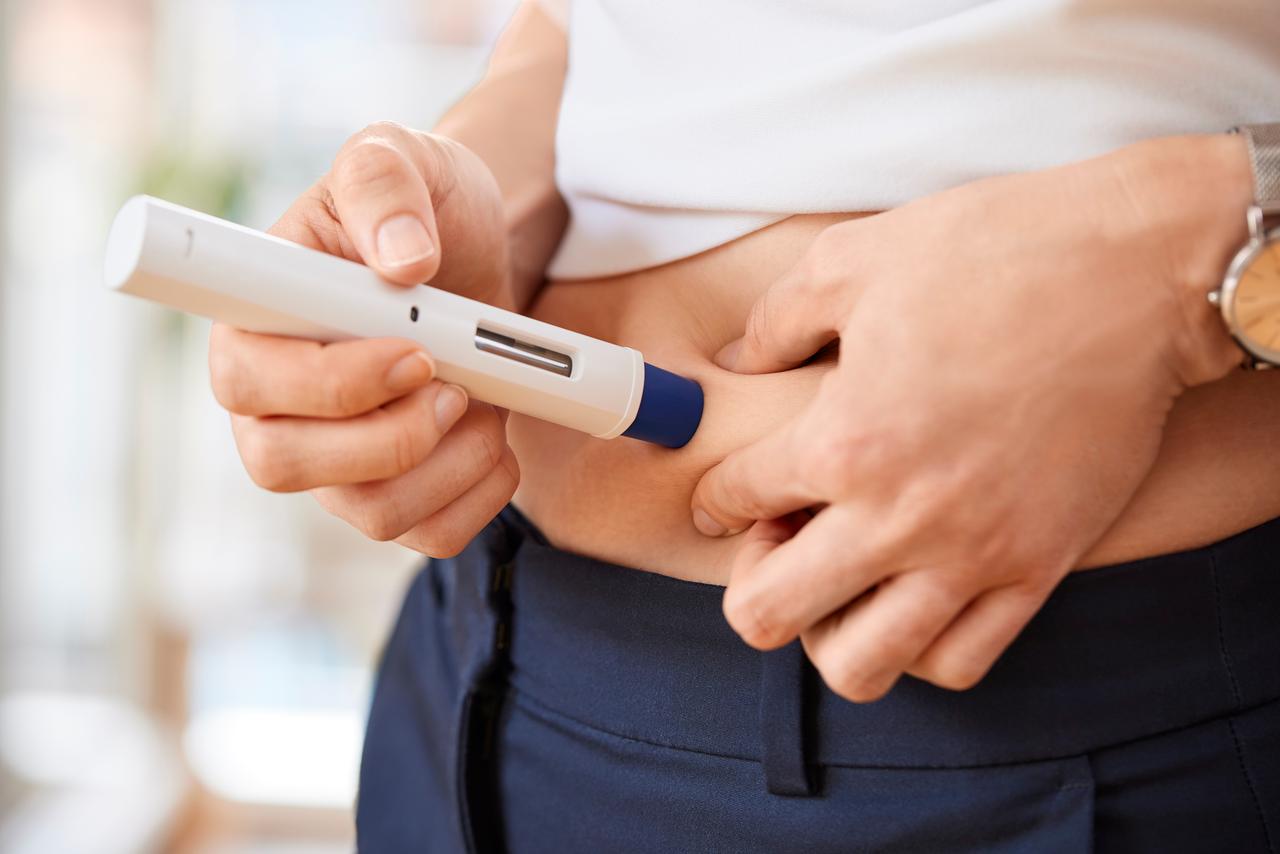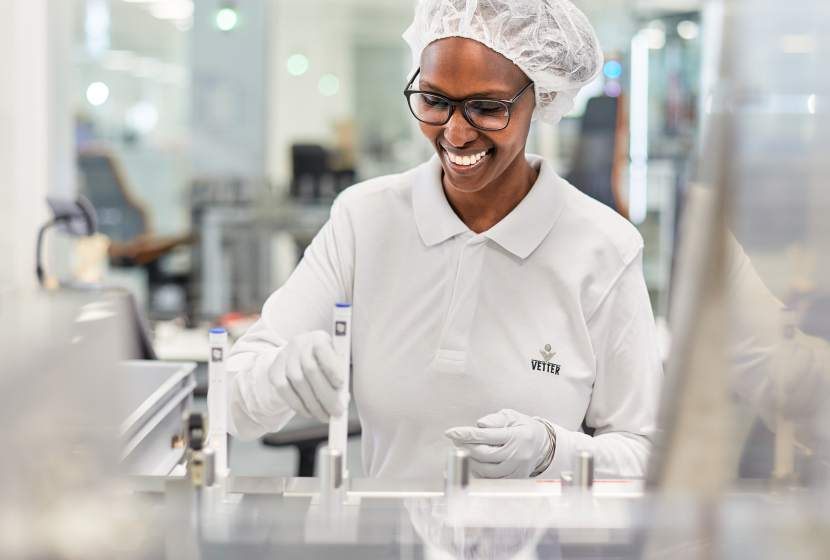
In recent years, sterile injectable therapies have rapidly evolved in many different ways. Not just the molecular and biologic science behind these products has advanced: the technologies used to deliver these products have taken many steps forward too.
While familiar vial-and-syringe kits are still common, many of today’s injectable therapies are now available in a variety of different drug delivery devices—from single- and multi-dose options to wearable pumps and more. Among these many formats, the autoinjector has recently become one of the most popular.
If you’re exploring the potential of these devices, or are planning to launch your product in one, keep reading. This post takes a valuable look at why autoinjectors have become so popular, how to identify the right device for your product, and how to start planning for the complex manufacturing process they require.
Autoinjectors: What they are and what’s inside them

An autoinjector is a drug delivery device that simplifies subcutaneous or intramuscular administration of an injectable medication.
Most of these devices use a similar set of core components. To successfully launch your product in one, it’s important to be familiar with these four key features:
- The prefilled syringe: An autoinjector typically contains a single dose of medication that is fully delivered at one time.
- The injection mechanism: This is usually a push-button plunger activated by the patient when they administer the dose.
- The autoinjector cap: This exterior cover protects the syringe needle, as well as the rigid needle shield (RNS) many autoinjectors also have. Patients must be able to remove both when it’s time to administer their dose.
- Internal safety and stability components: Inside the device, an autoinjector typically has several features designed to hold the syringe securely in place during delivery.
Each of these components plays an essential role in the function of an autoinjector, and needs to be expertly selected and assembled to protect the functionality of the final product. Together, though, these features enable a range of advantages that have made autoinjectors an increasingly important consideration for injectable therapies.
The autoinjector market: What’s driving this format’s popularity

Autoinjector-based products for intramuscular (IM) and subcutaneous (SC) injection have been available for some time now, especially with acute response products like EpiPens. In recent years, however, a growing number of injectable products have been introduced in this format. Today, autoinjectors have become one of the most popular self-injection devices for many different common conditions, including rheumatoid arthritis, diabetes, obesity, migraine, and more.
So why is this format increasingly in demand? Several major market dynamics are driving demand for injectable medications that are easy for patients to administer themselves, and especially for autoinjectors:
- At-home care: A significant trend across the global healthcare system, this cost- and time-saving shift has driven a surge of demand for therapies that can be safely and consistently self-administered without clinicians’ help.
- COVID-19: Even as we transition out of the COVID pandemic, many patients and providers have come to prefer at-home care approaches once developed as a pandemic necessity.
- Biologics & biosimilars: These complex, sensitive products are playing a fast-growing role in the global healthcare system. They typically require precise dosing and strict compliance, making them a great match for devices like an autoinjector.
Together, these trends are fueling rapid growth in the market for autoinjector-based products.
Several features of the autoinjector have put this format at the forefront of this trend, and made it increasingly preferred over standard delivery formats—especially syringe-and-vial kits.
Benefits for patients and clinicians
- Convenience: Autoinjectors make it easy for patients to administer their treatment on their own schedules, without going into a clinic. They’re portable, discrete, and can be administered quickly and easily.
- Ease of use: Self-contained autoinjector-based products don’t require complicated, multi-part syringe-and-vial kits or multi-step prep processes.
- Simplified adherence: When it’s easier to administer each dose, evidence shows patients are more likely to stay compliant over time.
Benefits for drug developers
- Competitive edge: When patients and providers have options to choose from, a convenient, user-friendly product can set itself apart. This can be especially important for highly competitive therapeutic areas like diabetes and rheumatology.
- Expanded market: Autoinjector-based products can be more usable for patients with physical or mental challenges that may impair their ability to use conventional injection kits (e.g., dexterity issues or needle phobias).
- Brand building: Distinctive autoinjector designs with user-friendly features can help strengthen brand identity and loyalty.
All of these trends and advantages continue to drive further expansion of the global market for autoinjector-based treatments. And that growth looks likely to continue with the increasing prevalence of many chronic conditions that require regular, long-term care—and with growing patient demand for convenient, easy-to-use products.
Finding the right autoinjector option
If you’re considering this format for your sterile injectable, you’ll soon need to address one of the first and most important questions in this complex launch: what’s the best device for your product?

To find the answer to that question, the best place to start the search is often the target patients who’ll use the selected device.
Markus Hoerburger, Product- and Servicemanager, Secondary Packaging
For example, patients’ physical capabilities and limitations are critical considerations when it comes to selecting autoinjector components. Different patients and end users can have very different needs, such as:
- A pediatric therapy that will likely be administered by an adult caregiver who can easily use a variety of device types.
- A treatment for elderly patients with arthritis, who may need a product that can be opened with limited physical dexterity.
- A therapy for weight loss that may need a longer syringe to deliver medication through thicker tissue layers.
The right delivery device for each of these therapies will have a different set of design features and parameters—from the strength required to remove the autoinjector cap, to the pressure needed to activate the device, to the length of the syringe needle.
As you navigate the selection process, it’s also important to balance patient-friendliness and device processability—how efficiently and cost-effectively your selected device can be integrated into your manufacturing approach. That’s an area where an expert CDMO can provide valuable feedback, and help you select a device that fits into both your patient and process parameters.
Integrating an autoinjector into the aseptic fill-finish process

Once you’ve selected an optimal device, another complex and critical step comes next: adding your chosen device to your product’s manufacturing processes.
With an autoinjector, this step can involve several significant shifts. New device-related steps need to be integrated from start to finish, and several key components of the core aseptic filling process need to be reconsidered. If you’re planning to add device assembly to your product’s manufacturing framework, make sure you allow enough time for:
- Device selection: Finding the perfect match for your drug product and target users, factoring in ergonomics, needle design, ease of use, and more.
- Primary packaging: Verifying that your product’s syringe is both compatible with your selected device and supports efficient manufacturing processes.
- Aseptic filling: Designing a robust, customized filling process that factors device assembly into the overall manufacturing strategy.
- Device assembly: Defining the requirements, control strategy, and testing processes for your combination product.
- Final packaging: Planning for a final product configuration that can be aggregated, serialized, and efficiently distributed to your global markets.
Make sure to allocate ample time for each of these important steps, factoring in potential challenges and allowing room for adjustments, audits, and other potential added steps. A proactive approach to planning—as well as partnering with the right device assembly experts —can help pave the way for a successful autoinjector launch.
How Vetter can support the transition to an autoinjector
A specialized CDMO like Vetter can support many essential steps in the process of developing and manufacturing autoinjector combination products. We have more than 40 years of experience in aseptic fill-finish, including packaging and device assembly processes for autoinjectors, injector pens, and safety devices—as well as a proven track record of success in helping our customers bring high-quality products and therapies to market worldwide.
At Pharmapack, Europe's leading event for packaging and drug delivery, our packaging experts Markus Hörburger and Alexander Gutbrod gave a workshop on launching in an autoinjector. This article summarises the most important findings of the workshop for you. You can find a recording of the workshop here:

Want to learn more about our services? Get in touch to discuss how we can support your plan to launch in an autoinjector.
